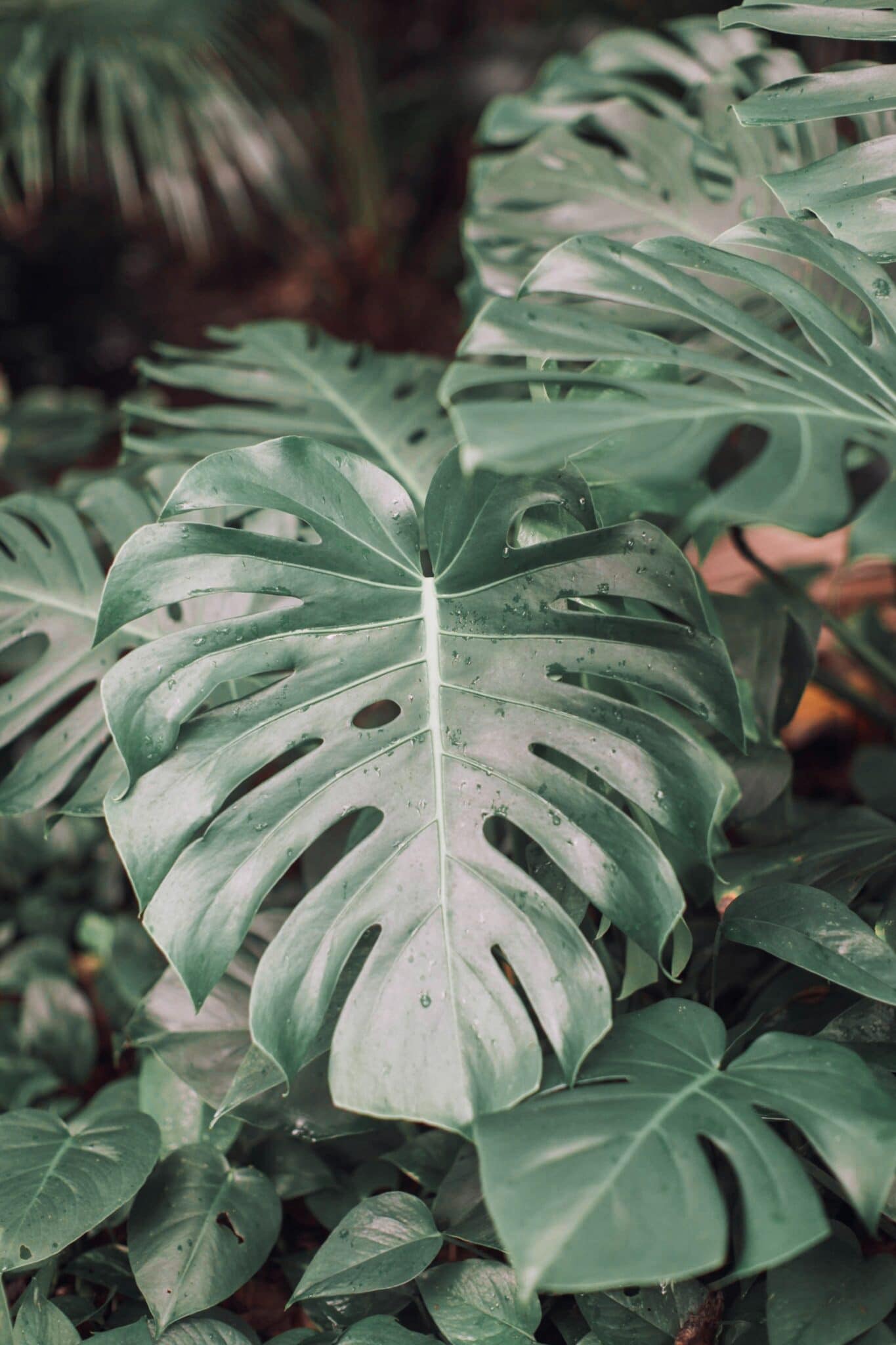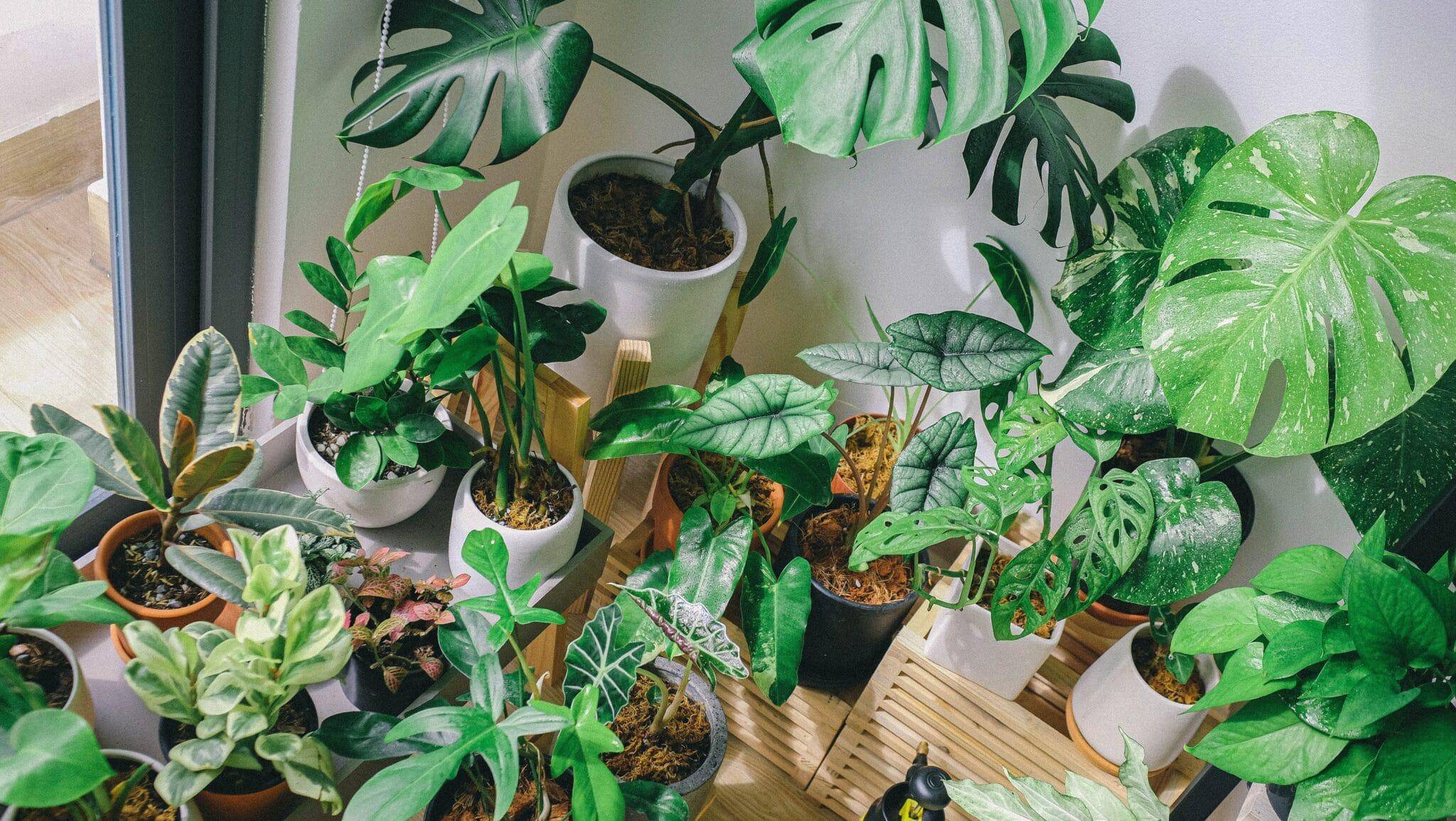Table of Contents
How To Grow Swiss Cheese Plant With Care Tips
We love the plant having heart-shaped leaves, it looks pretty, fresh, ravishing, and a great decor piece for our beloved gardens. Swiss cheese plant is one such plant that has beautiful heart-shaped leaves that leaves up totally mesmerized. This plant gets its name from its large heart-shaped leaves that soon start to develop new holes as the plants keep aging, by a process called fenestration.
Due to this process of fenestration, that is the arrival of holes, it somewhat appears like cheese, making it acquire this cheesy name. Swiss cheese plant is native to South America and Central America. It is a tropical perennial used for growing indoors and is a houseplant. It is well-known as an easy plant to care for and loves to climb.
Once we bring home a beautiful swiss cheese plant, we also should have a stake, a moss stick, or a trellis that can be used by the plant to cling on. This creates a beautiful display, we absolutely adore how it turns out. It produces larger leaves when staked with support.
Do you know which plant is the cousin of the swiss cheese plant? If you are a huge fan of indoor plants, you might figure it out. Monstera Deliciosa, also known as the swiss cheese plant is the cousin of the swiss cheese plant. Both the plants grow quickly and are well-known to reach amazing heights within 6 months of growing them.
If you want t to grow now right now, go for it. You just have to cultivate and care for them to nurture these plants quickly and perfectly. Although they are typically bought when they are immature baby plants from plant suppliers or nurseries, you can get them wherever you feel like, just remember to provide good care.
Let’s go through a quick guide to understand and take a recap of all the I’m[portant information related to the swiss cheese plant before proceeding further.
A Quick Guide

- The botanical name for the swiss cheese plant is Monstera Adansonii.
- Some common names that we use often to name this plant are the swiss cheese plant, swiss cheese vine, Adanson’s monster, and five holes plant.
- It is typically a tropical type of plant.
- You can expect the size of a mature swiss cheese plant to be nearly 6 to 8 feet tall and 1 to 3 feet wide indoors.
- Once you bring it home, it needs full sun and partial shade.
- The most commonly used and best soil type you can provide the swiss cheese plant is peaty soil.
- The expected pH of this plant is neutral to acidic in nature.
- Our favorite time or the blooming time of the swiss cheese plant is in the spring season, but they do no bloom indoors.
- They bear beautiful white flowers.
- Hardiness zones as per USDA are 10-12 when placed outdoors.
- As already mentioned, they are native to Central America and South America.
- These are dangerous and toxic to your cats and dogs, either keep them away or do not carry the planters home.
Care Tips For Swiss Cheese Plant
As we know swiss cheese plant is a tropical ornamental having aerial roots that grow downwards from the stem. These roots generally brace around any available support or against the ground. This provides the swiss cheese plant a vine-like tendency to climb for its proper growth.
When present in wild, it pushes itself upward onto any adjoining woody vine or tree using its aerial roots. If you are growing the swiss cheese plant as a houseplant you may use any stake or stick to hold its branches and stimulate the growth proving it something to rely on.
When all the proper and simple conditions necessary for its growth are maintained, this plant becomes extremely easy to take care of. It offers eye-catching beauty and amazing growth for less effort too.
Light Requirements
As we know this plant has an origin in tropical regions, it grows best when the sunlight is bright, indirectly falling on the plant, and has partial shade. These plants in wild conditions are used to thriving under larger trees in the forest when they are exposed for too long in direct sunlight, this may lead to the burning of leaves. Try to keep them away from direct exposure to the sun, even it is unavoidable, try to limit the time of exposure and then keep them in a suitable place indoors.
The maximum time you can expect their direct exposure to the sun is 2 or 3 hours in the morning sunlight. After this, you can keep them indoors.
Soil Type
The best type of soil for the growth of the swiss cheese plant is peat-based potting soil. This soil will help trap all the moisture in the soil without making it waterlogged. If you are willing to give it a stronger growth, make sure that you are maintaining a pH of 5.5 to 7. Also, try to choose a pot that has a lot of larger drainage holes at the bottom.
Water
These plants need to be moist most of the time or consistently but they do not like to be soaked. It might seem a little bit complicated to maintain that balance, you can easily check if your beautiful planter needs more water or not using a simple trick. Before you are watering the plant, just stick one finger about 1 inch inside the potting medium soil and see how it feels.
If you feel that the soil has become nearly dry in the consistency while you touch, the time has come to pour more water inside of it.
Humidity And Temperature
These plants are deep jungle plants that grow as the base of larger and tall trees for their support. They thrive on high humidity and requires a lot of moisture with high temperature for proper growth.
Through the conditions of humidity and temperature, you can easily figure out that the best place for the growth of swiss cheese plants is a greenhouse environment or a conservatory. For sure we cannot invest so much time in creating such a condition in our home, but we can mimic these conditions up to a certain extent.
Now the question is how do we mimic such natural conditions at home? It is not very difficult to keep up with. You have to choose a good spot for these plants that are well-lit, humid, and warm. You may use your bathroom or kitchen as a spot t keep them. Mist this plant at regular intervals. In addition to providing natural conditions, you may also invest in humidifiers that help keep the air moist.
The desired temperature for their growth is above 60 degrees Fahrenheit, however, it can survive in brief cold conditions as well with some die-back.
Fertilizer
Another important aspect that affects the growth of swiss cheese plants highly is fertilizer. Once you are done with potting and repotting the plant, you do not have to fertilize it instantly within few days. Just wait for a good period of four or six months and then fertilize the medium.
The potting soil used in this plant already has some slow-release fertilizer blended in it. It takes some months for that fertilizer to get over. After that, you may fertilize the plant every month using an all-purpose liquid fertilizer. Make sure that this liquid fertilizer is diluted by half before adding it to the plant.
Toxicity Of Swiss Cheese Plant

Unfortunately, this plant can be dangerous or toxic for small animals which include your pet dogs and cats. This is because the swiss cheese plant has insoluble calcium oxalate crystals. These crystals are found in all the parts of this plant from its leaves to roots to stems. It is important to note that they are not always fatal, but your beloved pets are not worth this risk.
It is necessary that you take an appointment with your vet or any other emergency service if you already have this planter at home and you feel your pet has experienced some symptoms lately. If you still wish to keep the planter home, just place it on a spot that is out of your pet’s reach.
These are some symptoms that your dog or cat might experience if they consume swiss cheese plants or have a direct contact for too long.
Poisoning Symptoms
- Excessive drilling.
- oral irritation
- Difficulty in swallowing food.
- Vomiting
- Pawing at their mouth.
If you feel any of these symptoms are clearly evident in your pet, make a quick visit to your vet as these symptoms are poisonous and dangerous.
Pruning Swiss Cheese Plant
Usually, all the climbers need pruning while they grow out of control. As we know, the swiss cheese plant is a climber. If it has been to outgrow your space or grow out of control, it might need to be pruned.
Pruning can be carried out efficiently in the Spring season or Autumn season. You need to remove the top growth along with damaged and dead leaves left on the plant. Make sure you are cutting closer to the main stem, this will help you avoid creating any stubs.
How To Propagate The Swiss Cheese Plant
The best way to propagate this plant is stem cutting having rotting hormones. You have to plant the cuttings in any growing medium to keep them protected and warm until you see new growth emerging out of this.
You have to remain patient while doing so because it may take a while for the new cuttings to root. Just keep them in suitable areas having moisture and warmness for fast growth. This will also improve their chances of survival.
Another way to root the cutting is just inserting the stems you have into the water for few weeks straight. In this way some network of roots will appear, if you feel that the roots are appearing, use a peaty soil plating medium to pot this cutting inside the soil. You will receive great quality and beautiful swiss cheese plant within few months.
Potting And Repotting The Plant
You have already learned about potting the plant. You may repot your plant typically every year as needed and refresh the potting soil along with it.
If you do not follow the practices or repotting the planters, gradually the soil loses its ability to retain moisture and fertility which may lead to inconsistent growth. Failure to keep the plant in a nutritious medium or soil can disturb the overall growth of any plant for the long term.
Some Diseases And Pests

Like many other planters we keep in our house, the swiss cheese plants also have to deal with a lot of diseases due to pests like spider mites, mealybugs, whitefly, and scale.
Fortunately, such pests are not fatal most of the time. You can easily use neem oil or any non-toxic insecticide for treating your soil and plant.
Other than common pests luring on the plant, you have to keep a check for signs and symptoms of common diseases that might occur on your plant like root rot, blight, rust, and powdery mildew.
These were some important tips and information you needed to know before welcoming a swiss cheese plant into your house.
If you are love growing planters and microgreens indoors, check this guide that can help you with growing nutritious microgreens at home easily.


